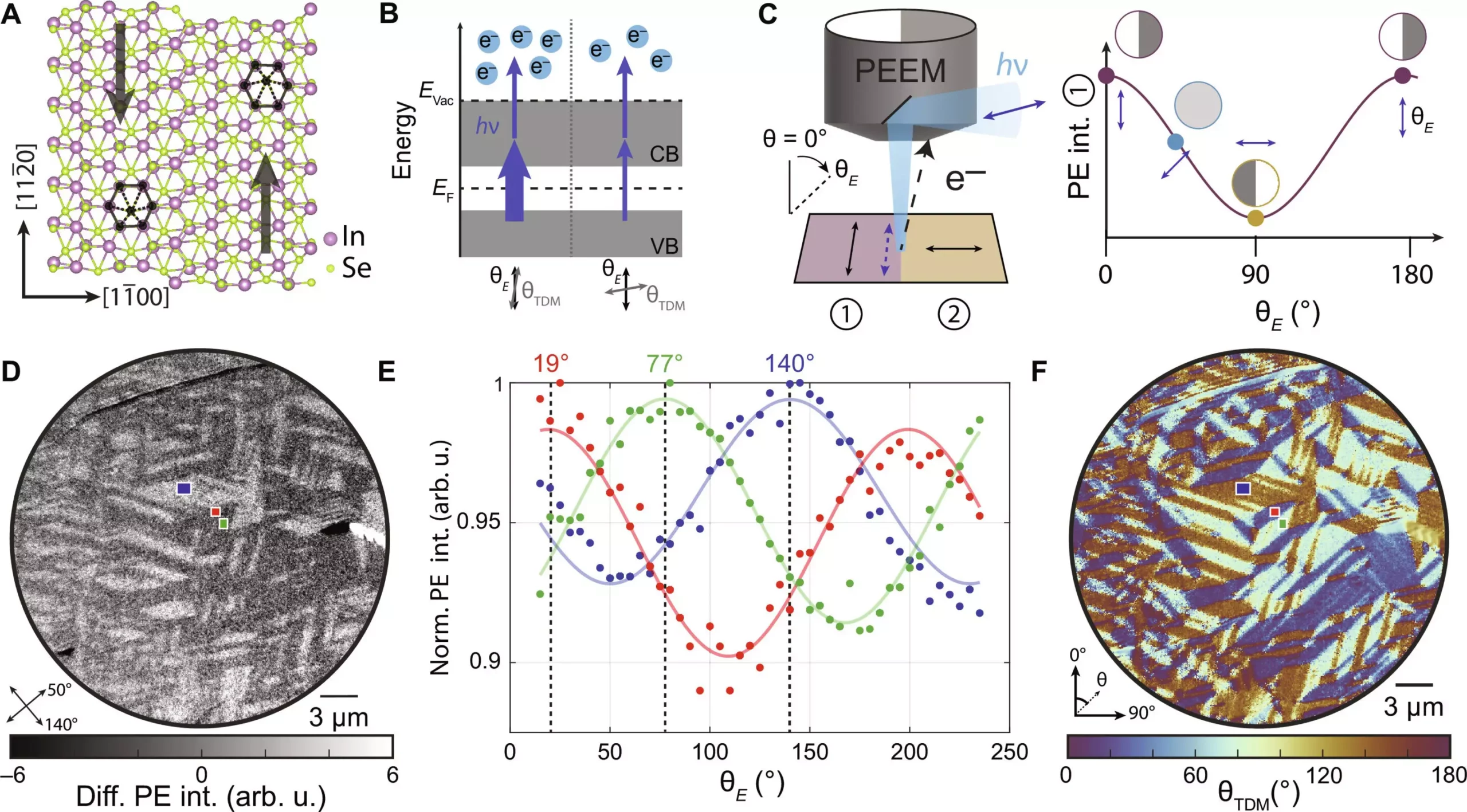The realm of materials science is entering a transformative era, particularly with the pioneering work undertaken by scientists at the University of Chicago in imaging antiferroelectric materials. These unique substances offer a tantalizing glimpse into next-generation technologies promising advancements in energy storage, sensors, and high-performance memory devices. The electronic properties inherent to these materials are complex, and deciphering them is vital to unleashing their full potential. Among these dedicated researchers, Assistant Professor Sarah King leads the charge, looking to unveil the intricacies of these fascinating materials.
Antiferroelectric materials are prized for their unique property of electric dipole cancellation, which results in a state of zero net polarization. This sets them apart from traditional ferroelectric materials, which maintain a net electric polarization. Understanding the mechanisms behind this phenomenon and the resulting domain structures—patterns in which dipoles arrange themselves—forms the crux of ongoing investigations. Yet, researchers have encountered monumental challenges in imaging these structures adequately, a bottleneck that has historically hampered progress.
Revolutionizing Imaging Techniques
King’s lab has introduced a novel imaging technique that takes a significant leap forward in our understanding of antiferroelectric materials. Her team’s groundbreaking work was recently published in *Science Advances*, showcasing the potential of a new method to meticulously map the nanoscale architecture of such materials. By employing polarization-dependent photoemission electron microscopy—a sophisticated technique that harmonizes information from polarized light and electron imaging—this research facilitates an unprecedented examination of the electronic properties and domain arrangements in commonly utilized antiferroelectric substances like indium selenide.
The capability to visualize these intricate domains not only aids researchers in understanding fundamental material behaviors but also paves the way for tailored modifications that could enhance their utility. “One of the major hurdles has always been the visualization of the domains,” remarked King while emphasizing the impact of this innovation. The breakthrough has opened the door to deeper exploration of how these materials function and how their unique properties can be manipulated for future applications.
Unlocking the Potential of Domain Dynamics
The pivotal role of domain dynamics in antiferroelectric materials cannot be overstated. The ability to manipulate an electric field to induce a higher energy state where dipoles cease to cancel each other out is a captivating feature that intrigues both scientists and engineers. Such behavior has significant implications for not only electronic applications but also energy storage solutions. As we begin to grasp how these materials interact on a molecular level, the potential for developing energy-efficient technologies becomes increasingly tangible.
King’s ambition extends beyond mere observation; she aims to decode the intricate interrelations amongst various material properties that contribute to the ordered states within antiferroelectric materials. By investigating phenomena such as phase transitions and domain switching, researchers can glean insights that may lead to innovative solutions in electronics and nanotechnology. The incorporation of these findings could redefine the paradigms on which current technologies operate.
A Collaborative Endeavor
This pioneering work is not solely a product of King’s efforts; it embodies the spirit of collaboration among an array of researchers, including undergraduate and graduate students as well as postdoctoral associates. It is a testament to the power of teamwork in academia and the vibrancy it can bring to scientific discovery. Figures like Joseph Spellberg, Lina Kodaimati, and Prakriti Joshi have contributed significantly, reinforcing the notion that breakthroughs in science thrive in inclusive and collaborative environments.
In essence, the research conducted by the team at the University of Chicago represents a confluence of innovative imaging technology and a profound understanding of material properties. By overcoming significant hurdles in imaging, they have laid the groundwork for future explorations into antiferroelectric materials.
The Future of Materials Science
As we venture into unknown territory with antiferroelectric materials, it is crucial to maintain a forward-thinking perspective. The implications of this type of research extend into various sectors, including renewable energy and smart technology development. With researchers like King at the helm, we are on the brink of unlocking new frontiers that could not only revolutionize how we store energy but also enhance our capabilities in electronics and telecommunications.
As the boundaries of materials science continue to expand, the recent advancements in imaging techniques signify a promising pathway towards achieving innovative, sustainable solutions that address the challenges of modern technology. The future appears bright, driven by the energy and creativity of researchers dedicated to exploring the intricate dance of electrical properties in these exceptional materials.

